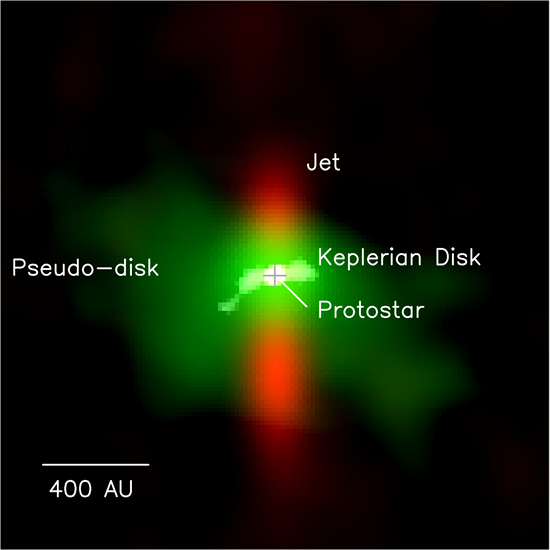ALMA Revealing the Pseudo-disk, Keplerian Rotating disk, and Jet in the Very Young Protostellar System HH 212

Figure 1: ALMA composite image of HH 212, showing a pseudo-disk (green) and a Keplerian disk (bright green) in dust continuum, and a bipolar jet in HCO+ gas (red). (Lee et al. 2014)
HH 212 is a very young star-forming region, with the central forming star (protostar) being about 36 thousand years old and having a mass of about 0.2 solar mass. It is in Orion at a distance of about 1300 light-years away. We mapped it with ALMA and found that the core material there does not fall directly onto the protostar, but through first a flattened tenuous structure called "pseudo-disk" and then a dense Keplerian rotating disk (Figure 1). This result is consistent with the current collapsing model of a magnetized rotating core, and the formation of the pseudo-disk and Keplerian disk is due to a combined effect of the magnetic fields and angular momentum. An accretion shock is formed at the interface between the pseudo-disk and Keplerian disk, turning the pseudo-disk into the Keplerian disk. Interestingly, the protostar also ejects mass into the interstellar medium in the form of a highly collimated and supersonic bipolar jet (Figure 1). The jet seems to carry away excess angular momentum from the innermost part of the Keplerian disk, allowing the disk material to fall onto the protostar.